I love Boynton’s artwork, with it’s clean lines and bright colors and familiar characters, and I know small children are drawn to them also. The rhyming text is in large print, with only a sentence or two per page, but I think this book really needs to be paired with Hippos Go Berserk, it’s obvious companion, in order for the story to make much of an impact. So if you have that one, and your readers are familiar with it, then this one would make a nice contrasting story. As a stand alone, it’s a bit flat, just describing two hippos having a rather calm day, and then inviting a couple friends over in the evening, and when more friends show up, the calm disappears as a party ensues. It’s fine, but is better when paired with the other to provide context.
Category Archives: Recommendation
Brave Little Bear
The illustrations are absolutely charming! The big eyes on the bear cub, Arlo, capture the reader’s heart from the start. The message may be a familiar one, that “Being brave when you feel afraid is the very bravest brave of all,” but because the cute little bear sucks us in at the beginning, we feel for him every step of the adventure that teaches him this lesson. He doesn’t want to leave his cozy cave all snug with his mom and sister, but mom tells him to be brave as they set out. He sees his sister as the brave one, until she gets lost in a snowstorm and he rushes out on his own to save her without even thinking about it. In the end, once they’ve all reached their destination safely, he once again finds himself snuggly curled up with mom and sister. It’s a feel-good story that leaves the reader comforted by the reassuring ending of everything turning out alright in the end, and the confidence that we all have the capacity to be braver than we believe when need arises.
Little Vampire
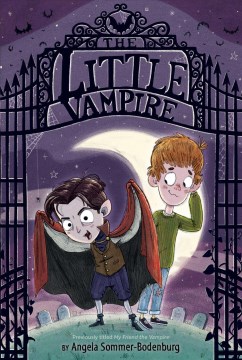
by Angela Sommer-Bodenburg
Tony loves scary stories and horror films. So, he’s quick to recognize his new friend, Rudolph, is a vampire. He showed up at Tony’s window one night after Tony’s parents went out (which they seem to do nightly, leaving Tony alone). Rudolph visits Tony most nights, borrows his books and loans him his uncle’s cape so Tony can fly to the cemetery with him to visit his crypt. Soon, Rudolph’s sister, Anna, joins in the fun. Eventually, Tony’s parents become suspicious and as, for Tony to invite his new friends over for tea. He tries to fool his parents with a substitute and it didn’t go well. Anna, who has a crush on Tony, and Rudolph come to tea and try hard to appear human with mixed results. Tony’s parents shake their heads at his new friends and decide they don’t need to visit again any time soon.
This story is translated from the original German and is part of a six book series. While the premise is interesting, the story lags a bit and its macabre theme isn’t terribly humorous. Kids who enjoy horror fiction might find this book interesting, although it’s not really horror. And, readers that enjoy humorous stories might not like it either.
A Day in the Sun
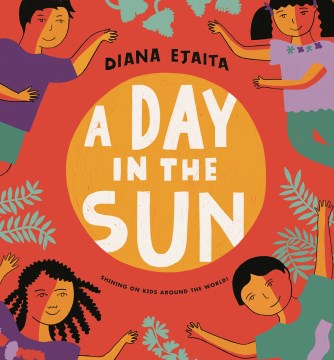
by Diana Ejaita
As the world travels around the sun and daylight shines in all the different places , we see how it affects us in the most positive ways. Each two-page spread highlights children in a noted country and what happens on a sunny day, whether it is covering their heads from the very hot sun to taking a swim to cool off. The bright, vibrant colors add to the story and the smiling children throughout remind us that we are all living on the same world under the same sun. This is a lovely book to share.
Babajoon’s Treasure
This is a good addition for libraries wishing to expand their multicultural offerings. The main characters are immigrants from Iran, but the story line is one that could fit any young child on a day out with her grandfather: As the narrator describes her visit to her grandfather, she starts noticing details that set her imagination going: he’s got a gold coin, and he sings to a parrot, and he speaks an unknown language with a friend who gives him magic crystals (a.k.a. rock candy), so she decides he must be a pirate. Even after he sets her straight, she still recognizes his many great traits and decides she wants to be just like him someday.
In Every Life
I love this book! The text is simple and poetical. A single sentence per two-page spread uses a repeated structure to express some big, complex, sometimes intangible ideas. The real star of this book are the illustrations: for every big idea there are many individual illustrations, offering different ways those words could be interpreted. They invite the reader into really pondering those big ideas. The use of color is very deliberate and effective. I listed this book as intended for elementary, but I certainly think it would have uses and appeal for all ages.
Our Day of the Dead Celebration
The illustrations are bright and cheerful, suiting the intended tone of the day it is describing. The text is straightforward and enthusiastic. Because it is written in the first person plural, it avoids trying to cover all the ways different people/families/communities celebrate; it simply shares one small girl’s descriptions of how her family celebrates. Though I do think most of the common themes of the day are included. Students who celebrate the day withing their own families are likely to find much to relate to, and those who don’t will still likely find much to relate to, while also gaining a clear understand of what may be an unfamiliar holiday.
Palace of Books
The only thing I’m not sure I like about this book is the title. Though the title edifice does play a significant role in the story, it’s really a much more expansive story than just that piece of it. Drawing on personal memories, as so many of Polacco’s books do, this one tells of year of her life when she was in transition. It’s about going through changes, and saying goodbye to familiar places and venturing into to ones. it’s about meeting new people and finding your niche, discovering what you have to offer. It’s about people who help us discover our passions and talents. It’s about using our passions and talents to make an impact on the world around us, even if we’re not in one place very long. Great book. My one reservation about giving it a highly recommended rating, is that the lengths of Ms. Polacco’s books often make them hard sells to the picture book crowd. Are they really targeting children? Or adult readers who love children’s books?
This Book Is My Best Friend
It’s cute, and it’s got some good points to make as two kids very politely “argue” over the same book at the library, which each claims as their own best friend, and try to convince the other that they are really the one who needs it most. I liked that they had different reasons for liking it, and they had different reasons for needing it, and that each did their best to try to find alternative options for the other. I liked that the illustrations add to the text, expanding on the unstated details of the story. I also like that they seem to have made friends in the end, just as their respective favorite characters do in the book. I didn’t like that it was sometimes difficult to tell which character was saying what, and in the end, though it showed both leaving the library together, with books in hand, they never actually explained how they resolved the issue of who was going to get to take home that favorite book.
Angelina, Star of the Show
For fans of the other Angelina Ballerina books, this will be a hit, with the same cute, sweet, tutu-wearing mouse, and lots of floweriness. The story is straight-forward enough, and relatable to kids, who may not have ever been on a river voyage with their grandparents to a mouse jamboree, but can probably connect with the idea of being asked by grown-ups to do things they’d rather not, and perhaps causing problems because they’re too distracted by their own interests to pay proper attention to tasks at hand. Reading as a grown-up, I have to confess to being irritated by Angelina’s repeatedly causing problems for others without ever being concerned by the problems she caused, and only being moved to tears when her antics created problems for herself. I found her rather selfish. In the end, grandma is understanding, and helps Angelina work around the problem she landed herself in, and everything is hunky dory at the triumphant finale.
Ethan and the Strays by John Sullivan
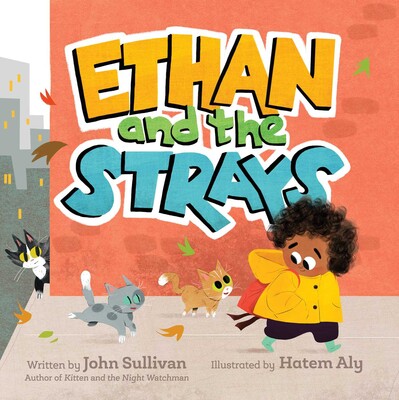
Ethan spots three stray kittens on his way to school one morning. He is immediately captivated by them and starts visiting them every day on his way home. Though his brother insists their dad would never let them get a cat, he helps Ethan learn more about stray cats and how they survive. The book also teaches about a local vet’s trap, neuter, return process to prevent more kittens from ending up on the streets.
Kids will immediately connect with Ethan’s obsession with the adorable strays and will be inspired by his quest to make sure they are okay. Hatem Aly’s illustrations will further enthrall kids as they see the kittens run, eat, and play. This is a great book for any animal lover.
Log Life by Amy Hevron
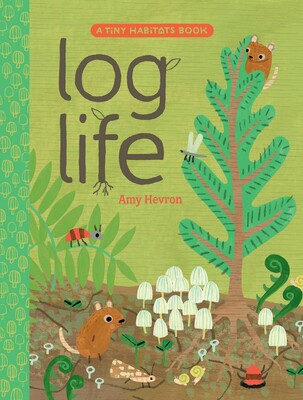
The story begins with a tree falling in the forest. The reader follows along with what happens next as the end of one life creates a habitat for fungi, plants, and animals. Young readers will be able to follow along with the simple descriptions of complex concepts and will learn about a wide variety of forest dwellers. Hevron’s charming illustrations add to the tranquil feeling the book gives as we watch one thousand years of life pass by over the course of 40 pages. Young nature lovers will be fascinated by all they see and inspired to go out searching for nurse logs to investigate.
Aston Martin Valkyrie
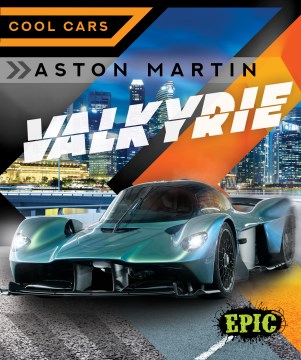
by Kaitlyn Duling
“Cool Cars” series literally says it all in the series’ name. These are books about fast, luxurious and fun cars that are, well, COOL! High interest topics paired with a load of brilliant photos and accessible text make this 28 book set a must-have in your library. Nonfiction elements include: Table of Contents, glossary, index, bolded words and labeled illustrations. Each book has the important facts about a car like its engine type, history, size, speed and future plans of the manufacturers. This photo-heavy, high-low series will be popular among your patrons!
The Aston Martin Valkyrie is a very special car – only 150 have been made and the starting price is over $3,000,000! This is a hybrid model, with a powerful gas engine and an electric motor as well. Because it is so rare, this car is popular at car shows and people stop to stare when one drives by. Readers will dream about seeing one of these cars one day!
Audi RS E-Tron GT
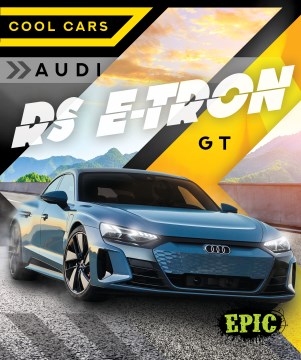
by Kaitlyn Duling
“Cool Cars” series literally says it all in the series’ name. These are books about fast, luxurious and fun cars that are, well, COOL! High interest topics paired with a load of brilliant photos and accessible text make this 28 book set a must-have in your library. Nonfiction elements include: Table of Contents, glossary, index, bolded words and labeled illustrations. Each book has the important facts about a car like its engine type, history, size, speed and future plans of the manufacturers. This photo-heavy, high-low series will be popular among your patrons!
The Audi RS E-Tron GT is an all electric car that is super fast and luxurious. It was first made in 2021 and has a driving range of nearly 300 miles. There are a lot of plans for this model, including animated lights and, possibly, a smart version in the future!
Ferrari SF90 Stradale
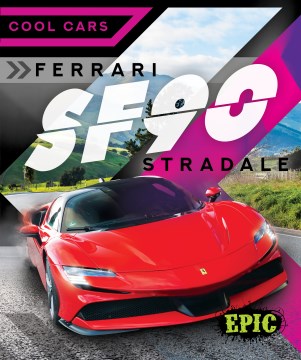
by Kaitlyn Duling
“Cool Cars” series literally says it all in the series’ name. These are books about fast, luxurious and fun cars that are, well, COOL! High interest topics paired with a load of brilliant photos and accessible text make this 28 book set a must-have in your library. Nonfiction elements include: Table of Contents, glossary, index, bolded words and labeled illustrations. Each book has the important facts about a car like its engine type, history, size, speed and future plans of the manufacturers. This photo-heavy, high-low series will be popular among your patrons!
The Ferrari SF90 Stradale is a special car. It is one of Ferrari’s fastest models and go from 0 mph to 60 mph in just TWO seconds! It’s also a hybrid, with three electric motors and one V8 engine. It was first built in 2019. Readers will love the accompanying photos to this fact-filled book about the Ferrari SF90 Stradale. It’s quite a machine!
Mercedes – AMG GT
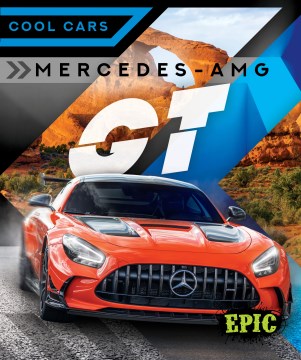
by Kaitlyn Duling
“Cool Cars” series literally says it all in the series’ name. These are books about fast, luxurious and fun cars that are, well, COOL! High interest topics paired with a load of brilliant photos and accessible text make this 28 book set a must-have in your library. Nonfiction elements include: Table of Contents, glossary, index, bolded words and labeled illustrations. Each book has the important facts about a car like its engine type, history, size, speed and future plans of the manufacturers. This photo-heavy, high-low series will be popular among your patrons!
The GT, aka Grand Tourer, is a fast, luxurious Mercedes model that was introduced in 2014. The last one was made in 2021 and next year they might reintroduce it. Young car enthusiasts will recognize the model from its work on the race track as a safety car. Of course, the famous Mercedes Benz badge on the front grill is a huge clue as to its maker. This is a fun, fact-filled book.
The Naysayers
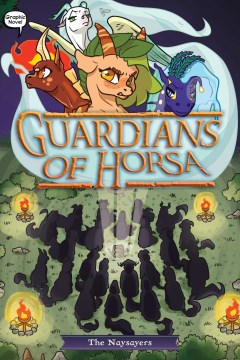
by Roan Black
The Guardians are back in Book #2 and continue their mission to save Horsa. They move underwater with Stillwater and with some help from Gale, who puts an air bubble around her fellow horses (Terra, Ray and herself) that can’t breathe underwater. They end up in a dangerous maze with a monster (Sharrior) and Firebrand, a warrior for the Naysayers. They manage to escape, losing one relic that Firebrand takes back to the Naysayers, who want to find the yearling first and take over Horsa. Can the young Guardians find the yearling first and save Horsa? That is their mission and they are determined to be successful.
This graphic novel has an exciting mission, engaging characters with a lot of personality and some kinda creepy bad guys. Top it off with really nice illustrations and you have a book that will fly off the shelves. This book is obviously a continuation of a story that started in Book #1. Therefore, it is not a stand alone. It’s worth the commitment to purchase the series when you have all the elements of a good fantasy for the younger readers – good vs. evil, a quest, magic and mythical creatures. Bump up your fantasy section with this this series. The kids will love it!
The Dolphin Dream
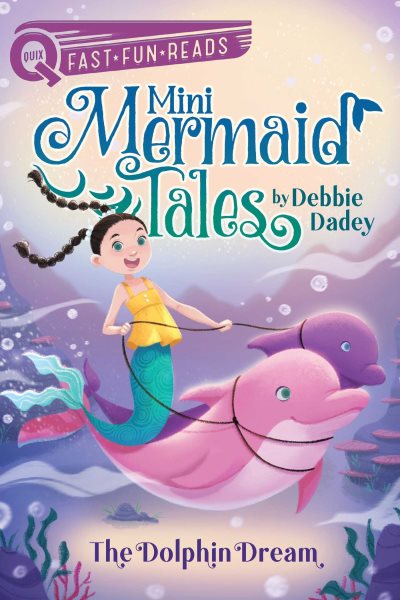
written by Debbie Daddy and illustrated by Fuuji Takashi
Aqua Wave loves dolphins and her dream is to ride a dolphin. The perfect opportunity arises when her older sister’s friend, Kiki, comes with an entire family of dolphins for the annual Trident City Dolphin Dash. Her teammate falls sick and she needs a new partner or she and her dolphin friends will have to withdraw. Aqua Wave really wants to do this, despite her sister saying she can’t. Shira, Aqua’s sister, had fallen off a dolphin and didn’t want the same thing to happen to Aqua. But, she finally gives permission and Aqua has the ride of her dreams. Aqua’s friends, Freddie, Rosie and Poppy cheer her on to the finish line.
This is the second book in the “Mini Mermaid Tales”, a spin off of “Mermaid Tales” by the same author. As part of the Quix Aladdin books (Fast Fun Reads), the books in the “Mini Mermaid Tales” are shorter with unfamiliar words bolded and questions at the end to help reflect on the story. Chapters are short and the font is larger and cast of characters is introduced in the front of each book. Black and white illustrations add to the stories.
This book is perfect for its target audience of K-2 students. This short book will be popular with young readers as it explores mermaids, dolphins, friendships and sibling relationships. Add this to your library if you need books for those readers that are ready for something a little longer.
Twisty-Turny House
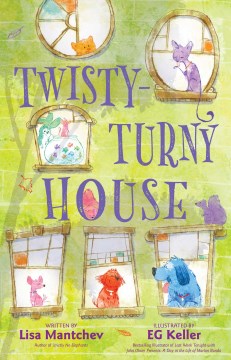
written by Lisa Mantchev and illustrated by EG Keller
In a twisty-turny house live four humans a rabbit, seven fish, a rat, two cats and three dogs. The cats are upstairs, the dogs are downstairs and the other pets are in the middle, which seems right. You know, cats and dogs don’t get along. But, one day, one of the cats comes downstairs. The pets in the middle are worried about the impending interaction – will the cat hiss and scratch? Will the dogs howl and chase it? Surprisingly, they get along. The dogs show the cat all the awesome things about living downstairs – the best snacks, great places to dig and great views of squirrels. The cat, along with his pal, show them the great things about upstairs – cold water, great clawing spots and a great place to watch squirrels. But, they wonder if they could look for even better things together in the middle? And, that’s what they do. The middle is the best, together.
This book is a gem! The simple text and colorful illustrations work so well together to convey the curiosity, trepidation, excitement and joy of the animal characters. The twisty-turny house is lovely and detailed and the animals are energetic. Readers will enjoy the interplay between the animals and eventual community they build. Buy this book for your library!
Cat Dog
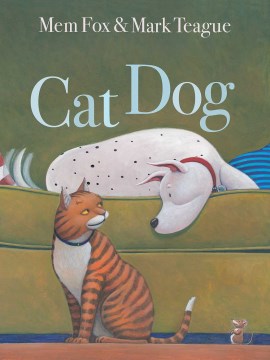
written by Mem Fox and illustrated by Mark Teague
Cat and Dog are hanging out and a mouse shows up. The ensuing chase ends with the mouse coming out of his mouse hole with…a violin? Each two page spread has a question about the scene on the recto and the next verso has the correct yes or no answer. This fun call-and-response story is sure to be a hit, with readers breathlessly turning the pages to see what will actually happen. This would be a great read-aloud as well. What a winning combination: Mem Fox with her witty word play and Mark Teague with his wonderfully expressive illustrations. Buy this for your library!
Dear Little One
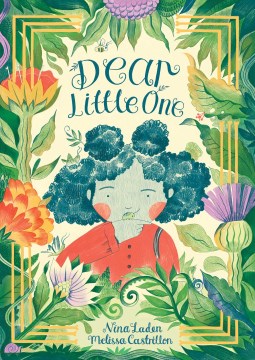
written by Nina Laden and illustrated by Melissa Castrillon
A young girl and her small white dog set out on a trek and along the way are gently encouraged by Mother Nature to appreciate and nurture their world. This lovely book has a beautifully lyrical text accompanied by stunningly detailed artwork. The message is simple and the illustrations fit it so well. Us the book for Earth Day (or any day) and share it with children as a reminder to really look around and observe the breathtaking beauty of their natural world. Highly recommended
Dilophosaurus
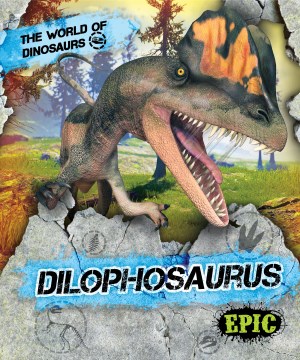
by Rebecca Sabelko
“The World of Dinosaurs” is a set of 22 books that presents the latest information on not only the well-known creatures, but also some of the lesser known (or more recently known) representatives of this group. This high/low series is packed full of information in the form of graphics, including size charts, timelines and labeled maps and illustrations. Text passages are accessible and bolded words are defined in the glossary. Typical nonfiction features include: table of contents, glossary, index, labeled illustrations and more. The best part of these books is the “Get to Know the (insert dinosaur)” near the end of book. This two page spread puts all the relevant information into an easy-to-read, attractive layout. This series is going to be very popular among your dinosaur-loving patrons. It’s actually a perfect book not only for the high/low target audience of grades 3-7; younger students will love delving into the world of dinosaurs in these books as well.
In Dilophosaurus, readers learn about a crested dinosaur that ate meat and had a special finger that acted much like a human thumb, which scientists believe was used to hold prey. This apex predator was once the largest dinosaur in North America. Illustrations and graphics do a great job of enhancing the text about this Jurassic period dinosaur. Be prepared to be awestruck by this book!
Therizinosaurus
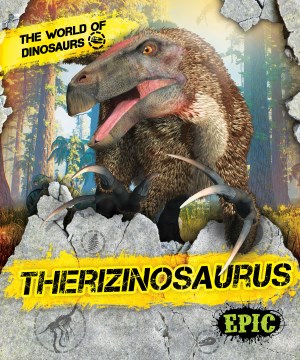
by Rebecca Sabelko
The “World of Dinosaurs” is a set of 22 books that presents the latest information on not only the well-known creatures, but also some of the lesser known (or more recently known) representatives of this group. This high/low series is packed full of information in the form of graphics, including size charts, timelines and labeled maps and illustrations. Text passages are accessible and bolded words are defined in the glossary. Typical nonfiction features include: table of contents, glossary, index, labeled illustrations and more. The best part of these books is the “Get to Know the (insert dinosaur)” near the end of book. This two page spread puts all the relevant information into an easy-to-read, attractive layout. This series is going to be very popular among your dinosaur-loving patrons. It’s actually a perfect book not only for the high/low target audience of grades 3-7; younger students will love delving into the world of dinosaurs in these books as well.
Therizinosaurus describes a beaked dinosaur, whose defining feature is its three foot long claws – the longest of any animal that ever lived! This herbivore was large and fossils hav been found in Asia and North America. Its other claim to fame? It was in the 2022 Jurassic World Dominion movie! This dinosaur book will not be on your shelves long. Its engaging content and accessible text make it a popular choice for budding paleontologists.
Pachycephalosaurus
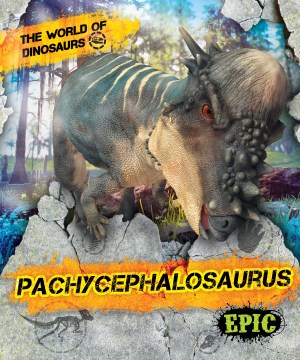
by Rebecca Sabelko
The “World of Dinosaurs” is a set of 22 books that presents the latest information on not only the well-known creatures, but also some of the lesser known (or more recently known) representatives of this group. This high/low series is packed full of information in the form of graphics, including size charts, timelines and labeled maps and illustrations. Text passages are accessible and bolded words are defined in the glossary. Typical nonfiction features include: table of contents, glossary, index, labeled illustrations and more. The best part of these books is the “Get to Know the (insert dinosaur)” near the end of book. This two page spread puts all the relevant information into an easy-to-read, attractive layout. This series is going to be very popular among your dinosaur-loving patrons. It’s actually a perfect book not only for the high/low target audience of grades 3-7; younger students will love delving into the world of dinosaurs in these books as well.
Pachycephalosaurus describes the dome-headed dinosaur that roamed North America during the Cretaceous Period. Scientists used to think that this dinosaur used its thick skull for head-butting. But, scientists have now determined that the domes on their skulls weren’t strong enough for this. We learn more about these interesting dinosaurs as new fossils are found. Budding paleontologists will love learning about this herbivore.
Amargasaurus
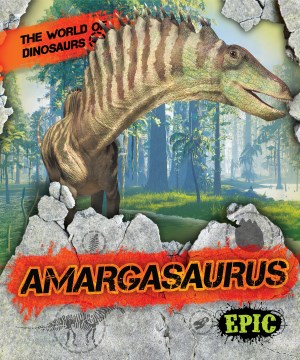
by Rebecca Sabelko
The “World of Dinosaurs” is a set of 22 books that presents the latest information on not only the well-known creatures, but also some of the lesser known (or more recently known) representatives of this group. This high/low series is packed full of information in the form of graphics, including size charts, timelines and labeled maps and illustrations. Text passages are accessible and bolded words are defined in the glossary. Typical nonfiction features include: table of contents, glossary, index, labeled illustrations and more. The best part of these books is the “Get to Know the (insert dinosaur)” near the end of book. This two page spread puts all the relevant information into an easy-to-read, attractive layout. This series is going to be very popular among your dinosaur-loving patrons. It’s actually a perfect book not only for the high/low target audience of grades 3-7; younger students will love delving into the world of dinosaurs in these books as well.
Amargasaurus describes a relative newcomer to the dinosaur world as the first fossils were discovered in 1984. This smaller plant eater had spines all along its back and scientists believe that the longer neck spines were covered in skin, creating double “sails” there. Its long tail might have been used in defense against much larger predators. Young readers will love to read this book and learn about a ‘new’ dinosaur.
